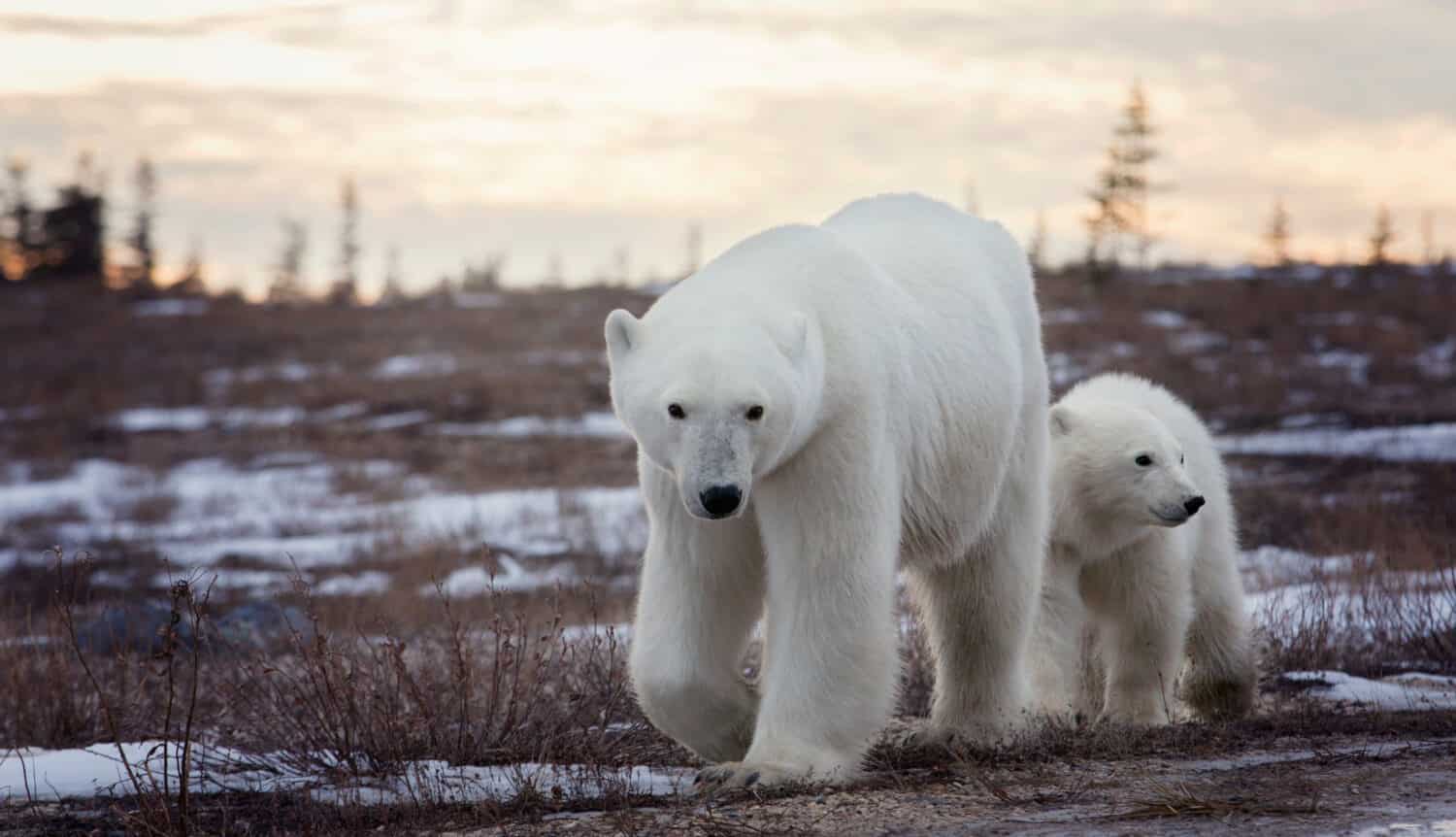The quest to understand the enigmatic realm of animal intelligence and self-awareness has captivated scientists, animal enthusiasts, and philosophers alike. Here, we set our sights for the great expanses of Canada to discover the 11 most intelligent mammals still living in the wild. They include the highly intelligent dolphins, orcas, wolves, and raccoons. We’ll also explore the cognitive worlds of squirrels, beavers, bears, and elk. And finally, we take a closer look at the often understudied but promising intellects of bats, rodents, and the Virginia Opossum.
The Mirror Test: A Gauge of Animal Self-Awareness
At the heart of the study of animal cognition lies the Mirror Self-Recognition (MSR) test, a groundbreaking behavioral technique conceived in 1970 by American psychologist Gordon Gallup, Jr. The test serves as a window into the cognitive world of animals, offering clues about their sense of self. This simple yet powerful tool involves marking an anesthetized animal on a hidden body part and then observing its behavior with a mirror. If the animal investigates the mark, it passes the test, signaling an understanding that the reflection is itself and not another.
The Elite Circle: Varied Intelligence Across Species
Only a few animals, including great apes, dolphins, orcas, some birds, and even a certain small fish, pass the MSR test. This diverse lineup challenges traditional notions of intelligence, reminding us that cognitive abilities come in many forms.
Beyond the Reflection: Multiple Aspects of Self-Awareness
While instrumental, the MSR test isn’t the end-all of self-awareness measures. Other forms of cognition, like songbirds recognizing their songs or dogs distinguishing their scent, have led to alternative testing methods, expanding our understanding of animal intelligence.
A World Beyond Human Understanding: Rethinking Our Place in Nature
The study of animal intelligence transcends mere academic curiosity; it forces us to reevaluate our own cognitive uniqueness. As we delve deeper into this captivating field, we confront questions that shake the very foundations of our anthropocentric worldviews. Are we truly unparalleled in our cognitive abilities, or are we just a point on a complex spectrum of animal intelligence? The answers may compel us to look beyond mirrors and into the eyes of our fellow Earth inhabitants.
The Cognitive Marvels of Canada: A Northern Perspective
As we ponder the intelligence of animals globally, it’s worth zooming in on the cognitive marvels found in Canada’s diverse landscapes. From the cunning raccoons that outwit urban obstacles to the socially strategic wolves, Canada is a living laboratory for studying animal cognition.
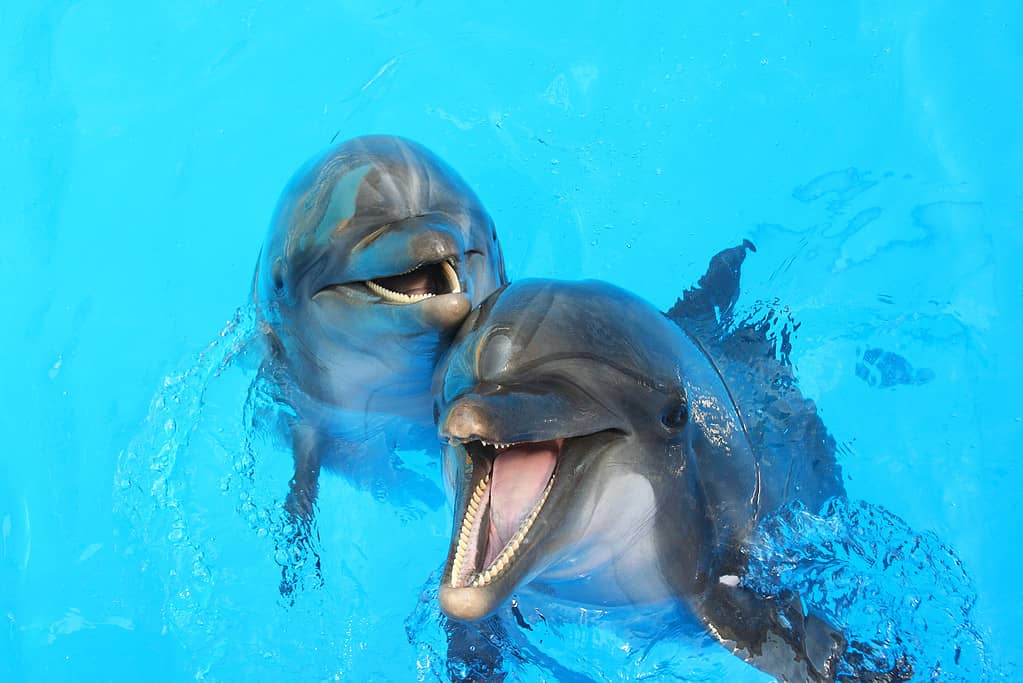
When we watch dolphins interact with humans, it’s like they completely understand our language.
©Elena Larina/Shutterstock.com
Dolphins: The Marine Einsteins of Canada’s Waters
Why, yes, dolphins are indeed found in Canadian waters. These intelligent creatures have passed the MSR test, which is a strong indicator of self-awareness and advanced cognitive abilities.
In Canada, several species of dolphins inhabit the coastal waters. These include the Atlantic White-sided Dolphin, White-beaked Dolphin, and even the Bottlenose Dolphin. Each species offers unique insights into dolphin cognition and behavior.
Research has shown that dolphins possess remarkable cognitive abilities. They can flexibly access memories of past events and construct sophisticated representations of the world and themselves. Their actions and memories impact their perception, which in turn guides their thoughts and decisions.
The nutrient-rich waters of Canada could indeed offer unique insights into dolphin cognition. The diverse marine environment might influence their social structures, problem-solving abilities, and overall behavior. For instance, the cold waters could affect their communication patterns or hunting strategies. Studying dolphins in these environments could provide valuable information about how they adapt to different ecological conditions.
Moreover, laboratory research has revealed that dolphins have a well-developed short-term memory for auditory and visual materials, including memory for lists of items. They also demonstrate concept learning within several paradigms, including discrimination learning sets and matching-to-sample. These findings attest to the remarkable flexibility and extensibility of dolphin cognition.

Apex predators, orcas devise clever strategies for hunting.
©slowmotiongli/Shutterstock.com
Orcas: Killer Smarts in Canada
Orcas, also known as killer whales, inhabit various regions across Canada. Notable populations swim along British Columbia’s coast in the northern Pacific. Although less common, these majestic creatures also frequent the Atlantic and Arctic waters. Recently, an aerial survey revealed one of the largest orca pods ever reported off the coast of Newfoundland and Labrador, consisting of about 30 killer whales. There are more orcas in western Atlantic waters than in the Mediterranean, with several hundred spread over a larger area, from the northern tip of Labrador all the way to Nova Scotia and the US border.
When it comes to intelligence, orcas rank alongside other MSR test passers like chimpanzees and dolphins. Their large, highly developed brains excel in areas such as cognition, problem-solving, and communication. These intelligent creatures not only learn but also employ complex hunting techniques. Observers have even seen them collaborating to capture prey. They also have a highly developed echolocation system that allows them to navigate and locate prey in the ocean. Their intelligence is evident in their complex social behaviors, communication, and problem-solving abilities.
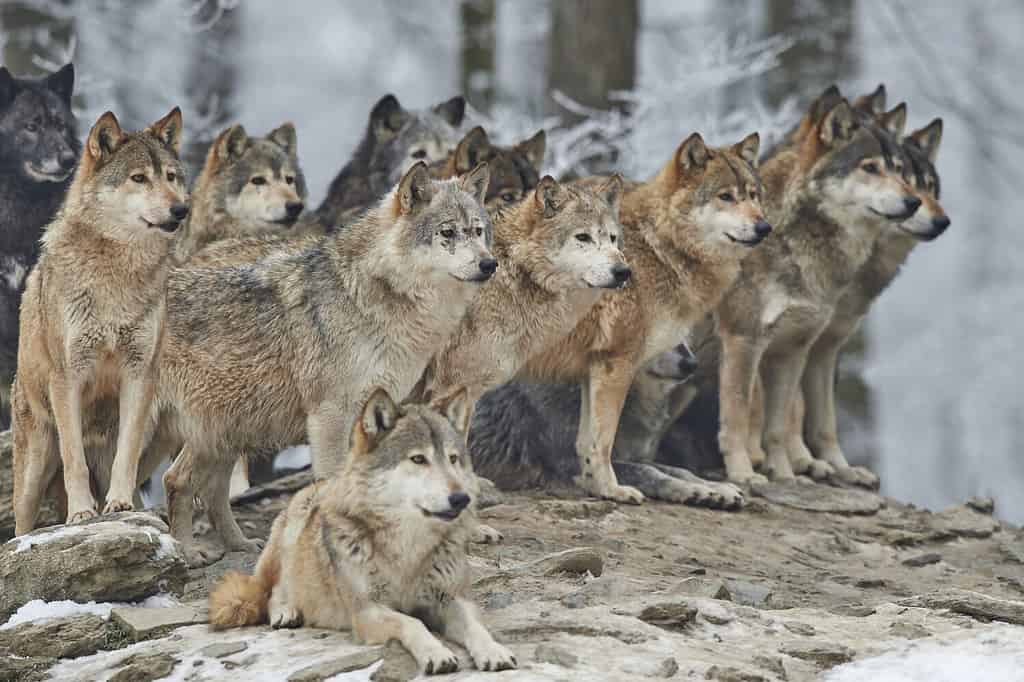
Canada is home to the second largest gray wolf population in the world.
©Michael Roeder/Shutterstock.com
Wolves: The Pack Strategists of Canada
Wolves, the pack strategists of Canada’s sprawling forests and icy tundra, exhibit high levels of collective intelligence in the wild. While they may not have been tested for mirror self-recognition, their social intelligence and complex pack dynamics are subjects of ongoing study.
Canada supports the second largest gray wolf population in the world, after Russia. Wolves in Canada occupy approximately 90 percent of their historic range. They are found in almost every province and territory except for New Brunswick, Nova Scotia, and Prince Edward Island.
Wolves are known for their complex pack dynamics and organized hunting techniques. A wolf pack functions like an extended family, led by the alpha pair responsible for maintaining order. Within the pack, a natural hierarchy exists, reinforced by sophisticated communication methods. Submissive behaviors, like exposing the stomach and throat, help keep the peace among pack members. Older, more experienced wolves pass down hunting strategies to younger ones, preserving the pack’s unique culture across generations.
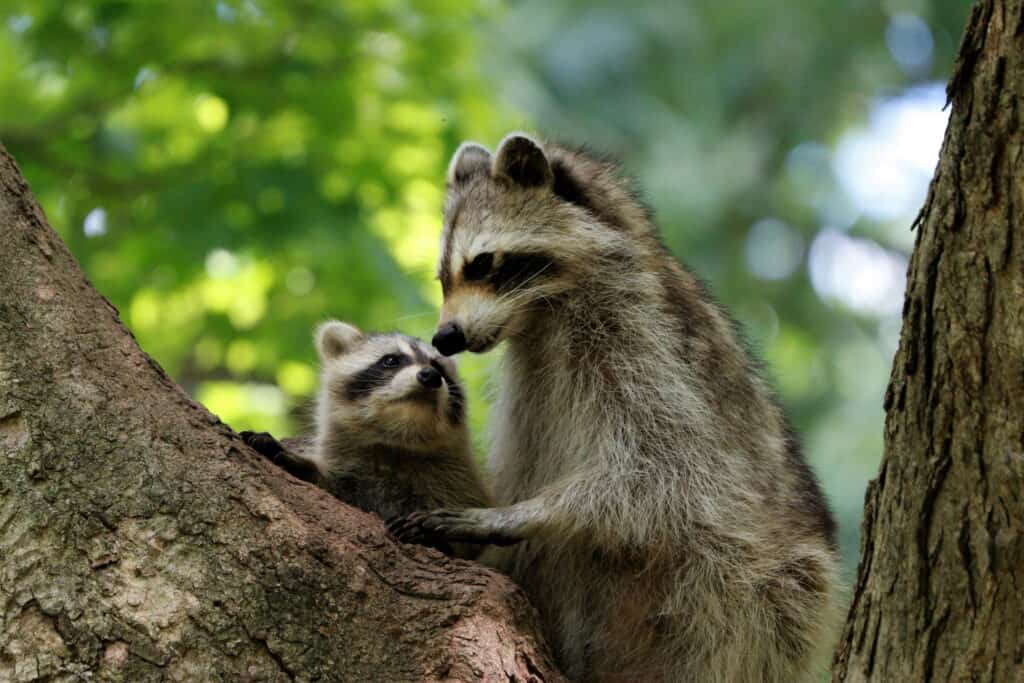
Smart and adaptable, unlike most mammals, raccoons have actually thrived in urban settings.
©L-N/Shutterstock.com
Raccoons: Canada’s Urban Brainiacs
Raccoons, often referred to as “trash pandas” or “trash bandits,” are indeed native to Canada. Although they haven’t undergone the MSR test, their problem-solving skills and adaptability in human-dominated settings hint at a level of intelligence worthy of further investigation.
In Canada, you’ll find raccoons in every province except Newfoundland and Labrador. They are highly adaptable and can survive in both urban areas and wilderness habitats. Raccoons are the largest of their family, Procyonidae, which consists of medium-sized mammals native to the Americas.
As noted above, raccoons are known for their problem-solving skills. Their behavioral flexibility renders high success rates with puzzles and tasks when presented in captivity. In the wild, this makes them adaptable creatures in both rural and urban environments. Researchers at the University of British Columbia have even enlisted the help of homeowners to set up humane traps and place a variety of puzzles in their yards for raccoons to solve.
In one study, raccoons were presented with a cylinder containing a floating marshmallow that was too low to grab. The researchers showed the raccoons how dropping stones in the water can lift the marshmallow. Two of the eight raccoons successfully repeated the behavior, dropping the stones to get the marshmallow.
Another experiment involved giving raccoons balls that would sink or float. The scientists thought their trash pandas would use the sinking balls to displace the water. However, two raccoons discovered that pushing up and down on the floating balls would splash bits of marshmallow up the sides of the tubes. Clever indeed!

For all who have ever mislaid their keys and simply can’t find them, let us learn from the squirrels.
©Lateman/Shutterstock.com
Squirrels: Canada’s Memory Keepers
Whether black, gray, brown-red, or albino, squirrels are common in Canadian parks and forests. In Canada, there are three types of groups of squirrels: tree squirrels, ground squirrels, and flying squirrels. Canada is home to all three types of squirrels. Indeed, around 22 different species of squirrels are found there, including 5 chipmunks, 4 marmots, and 1 prairie dog.
Squirrels have an incredible memory and can remember details for long periods of time. Research has shown that they can remember food locations, routes, and even human faces even after a year or more. Furthermore, their remarkable ability to form relationships with humans shows us how good their memory is.
Grey squirrels are known to have good long-term memory. In fact, they are “scatter-hoarders,” collecting and hiding thousands of nuts every autumn. University of Exeter scientists found grey squirrels quickly remembered how to solve a problem they had not seen for almost two years. In the study, five squirrels were given a task identical to one they had tried 22 months earlier, in which they had to press levers to get hazelnuts. Trying again for the first time in 22 months, they took an average of just three seconds to get a hazelnut. Yes, just three seconds!
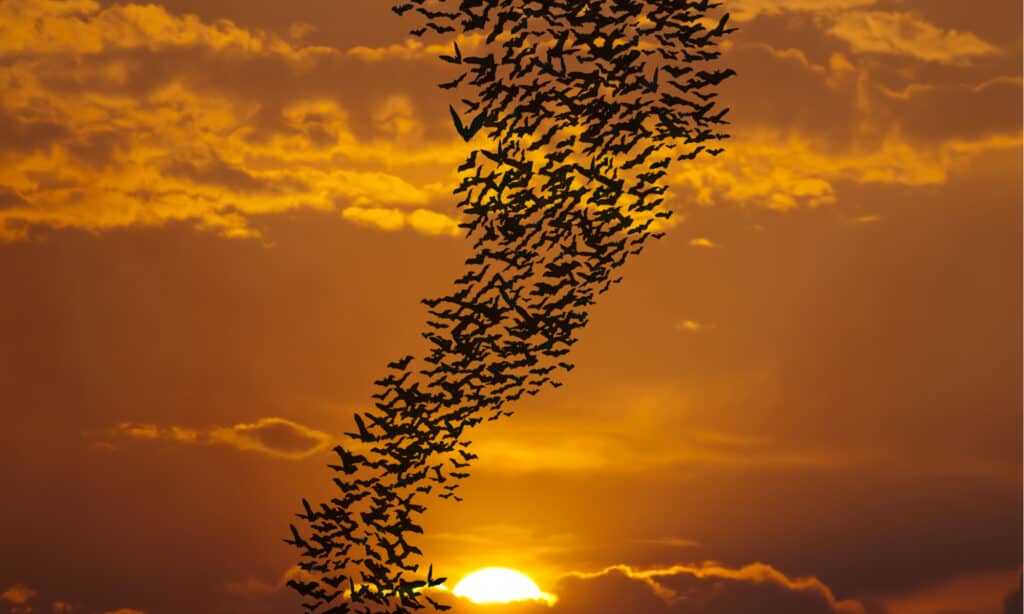
Long part of our cultural imagination, we actually know very little about bat cognition.
©Sarun T/Shutterstock.com
Bats: Understudied Night Creatures of Canada
These night-flyers are found in many parts of Canada. They are known for their advanced navigation skills, such as echolocation. A study conducted by the University of California, Berkeley, revealed that neural activity in the bats’ hippocampuses more strongly represented future locations than current locations. This suggests that bats have a built-in navigation system that focuses more on where they will be in the near future rather than where they are at present. This ability to predict and plan for future locations is a key characteristic of intelligence.
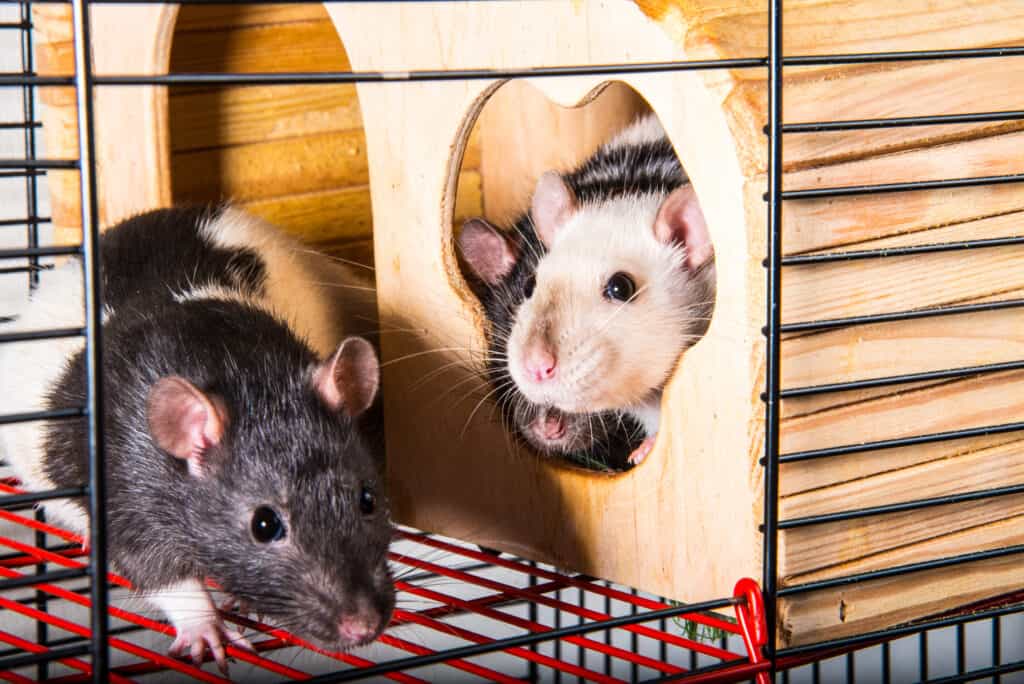
Hard to believe, but rats can outperform humans in certain tasks.
©Liukov/Shutterstock.com
Rodents: The Outperformer of Humans?
A full 68 of the 163 species of terrestrial mammals in Canada are rodents. Rodents range in size from 10 grams or 0.02 pounds (western harvest mouse; olive-backed pocket mouse) to 35 kilograms, or about 77 pounds (beaver). They are characterized by having upper and lower incisors specialized for gnawing.
Studies have shown that rodents, particularly rats, can outperform humans in certain cognitive tasks. For instance, when given two cognitive-learning tasks, rats were able to apply what they had learned more quickly than humans in a task that required information integration. This suggests that rats may possess a high degree of intelligence and problem-solving skills.

Adorable when young, fierce hunters of mice when grown, arctic foxes (and foxes in general) are highly intelligent.
©bhavdip12/Shutterstock.com
Foxes: Beyond Sly to Magnetic
Beyond being “sly,” foxes are known for their intelligence. Four species inhabit Canada: red or colored, swift, grey, and Arctic foxes. Foxes often eclipse dogs at certain tasks. Their spatial reasoning, memory, and understanding of repeated gestures is well above average. In fact, research has shown that foxes use the Earth’s magnetic field as a targeting system. This ability to predict and plan for future locations is a key characteristic of intelligence. Further, their ability to home in on a mouse buried under three feet of snow may be only one of the foxes’ many superpowers.
Bears: More Than Viral Video Stars in Canada
Three species of bears call Canada home: the polar bear, grizzly bear, and black bear. Boasting impressive memories crucial for their survival, these bears can recall the locations of dependable food sources. This ability proves invaluable, whether the food lies buried under snow or hidden within dense vegetation. This memory allows them to return to these spots year after year, maximizing their chances of obtaining sustenance.
Bears have also been observed using rocks to access food, hinting at rudimentary tool use. This suggests that bears have a level of problem-solving skills that is comparable to that of great apes. Additionally, they have been documented working cooperatively.
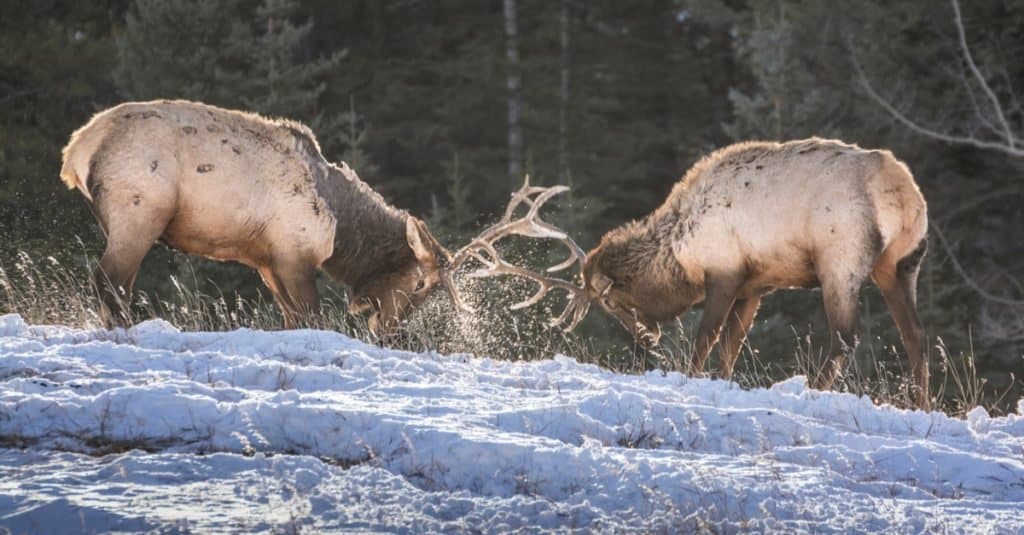
Two sparring Elk in Banff National Park.
©James Gabbert/Shutterstock.com
Even-Toed Ungulates: The Group Thinkers of the Great North
In Canada, even-toed ungulates feature a range of species, including deer and bovines. These animals stand out for their even number of functional toes—typically 2 or 4—on which they distribute their weight. There are well over 200 species of even-toed ungulate in comparison to their odd-toed cousins, who number just 17.
Elk, for instance, are known for their complex social structures. They live in large herds and demonstrate coordinated behaviors such as collective movement and predator avoidance. During the migration season, elk herds travel together in a coordinated manner, demonstrating a form of collective intelligence. Additionally, they can navigate complex terrains and find the best routes to their destinations.
Moreover, studies have shown that even-toed ungulates have remarkable memory abilities. For instance, they can remember the locations of reliable food sources and return to these spots year after year. This memory allows them to maximize their chances of obtaining sustenance.
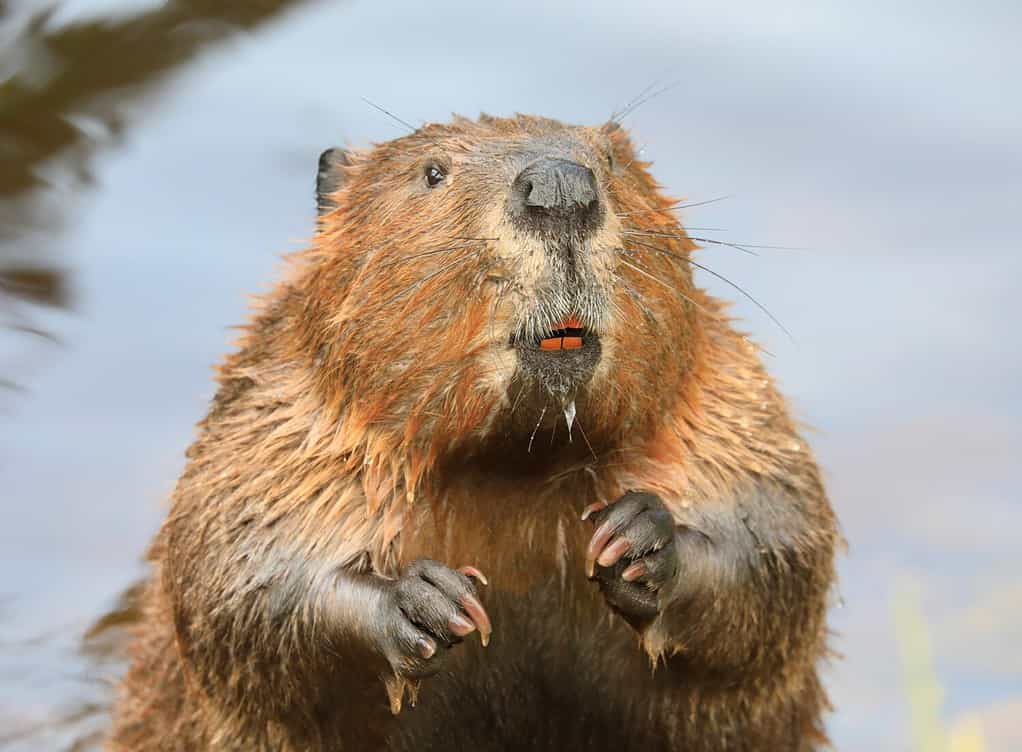
Due to chewing on tree bark, beavers’ teeth turn orange.
©Vlad G/Shutterstock.com
The Ingenuity of Beavers: Canada’s Masters of Adaptation
Beyond just building dams, beavers are strategic environmentalists hardwired by evolution. Triggered by the sound of flowing water, they assemble dams with remarkable precision. These structures are multifunctional fortresses that provide deep water pools, offering protection from predators and enabling food storage during harsh winters.
Beavers also demonstrate remarkable forethought in winter preparation. They selectively harvest bark from preferred trees like aspen and willow, storing it in underwater mud caches. The cold waters act as a natural refrigerator, and underwater lodge entrances allow access even when ponds freeze over.
Furthermore, beavers transform their ponds into secure navigation networks, facilitating everything from daily foraging to seasonal migrations. Their engineering prowess extends its benefits to the broader ecosystem. Beaver dams purify water and help prevent erosion and wildfires, serving as natural treatment plants and firebreaks.
In an era of ecological challenges, beavers stand out as a compelling example of both adaptation and positive environmental impact.

The sole marsupial in North America, the Virginia Opossum is a generally misunderstood creature.
©iStock.com/randimal
Virginia Opossum: The Versatile Adventurer and Immunological Magician
You can find Virginia opossum in Canada’s Southern and Southeastern regions. Canada’s only marsupial, it belongs to one of three marsupial families native to the Americas. The Virginia opossum’s northernmost range reaches into Southern and Southeastern Ontario, Southern Quebec, and the lower Fraser Valley in British Columbia. However, this range is slowly expanding north, likely due to climate change. Virginia opossums are about the size of a house cat and often mistaken for large rats. However, they are far from pests and give more than they take.
While people often celebrate beavers as Canada’s aquatic engineers, skillfully crafting intricate dam systems that transform rivers, the Virginia opossum occupies a different but equally captivating ecological niche. Rather than building structures, these marsupials are adept climbers that make extensive use of vertical spaces in their environment. Their unique anatomy is notable for the opposable “big toe,” or hallux. This enables them to grasp branches and navigate through trees with a grace belying their somewhat awkward appearance on the ground.
Contrary to popular folklore, only juvenile opossums, light enough for the task, can hang by their prehensile tails to perform this acrobatic feat. While they don’t build nests in trees, their ability to move adeptly through the canopy allows them to forage efficiently and escape predators. In a sense, this makes them masters of their domain. With their diverse range of interactions with their habitat, Virginia opossums are environmental multi-taskers.
Not Just Lone Wanderers
Though generally solitary, new research hints at a nuanced social life for these nocturnal wanderers. Previously, experts thought their social interactions confined solely to mating periods. Now, evidence suggests that their social behavior has layers yet to be fully understood. In this sense, the Virginia opossum evinces a complexity often underestimated by casual observers.
Immunological Goldmine
Virginia opossums are captivating the scientific community for a reason beyond their social complexity: their potent immune systems. For instance, they hold the biochemical keys to counteract a variety of snake venoms. Researchers have even isolated a protein in the opossum, the first 10 to 15 amino acids of which contain all its antivenomous properties. Such a discovery could pave the way for a universal antivenom, a medical breakthrough with global implications.
Moreover, these marsupials exhibit a remarkable resistance to Lyme disease, a feat credited to their immune systems. Their bodies also act as a cleaning service for ticks, making environments safer for other animals and humans.
Further immunological studies reveal a unique T cell lineage, known as γµ T cells, exclusive to marsupials and monotremes. With T cells playing a pivotal role against a broad range of pathogens, from viruses to bacteria, this could open a new chapter in the study of diseases like cancer and COVID-19.
From their peculiar yet fascinating anatomical features to their powerful immune systems, Virginia opossums serve as a perfect example of the intersection between zoology, climate science, and immunology. As their range in Canada expands, perhaps pushed by climate change, the interest in studying these nocturnal marvels is sure to broaden, especially given their potential role in medical advancements. In a land rich with natural wonders, the Virginia opossum stands out as an unsung hero deserving of a closer look.
Conclusion
In the universe of animal cognition, some stars shine brighter than others. The highly intelligent species like dolphins, wolves, and raccoons demonstrate remarkable cognitive abilities, from self-recognition in mirrors to complex social structures and problem-solving skills.
The moderately intelligent species such as squirrels, beavers, and elk also exhibit fascinating cognitive behaviors. Their uncanny memory abilities and intricate group behaviors suggest a form of collective intelligence that is both complex and mystifying.
The understudied but promising species like bats and rodents offer a glimpse into the latent cognitive abilities waiting to be discovered. Their ability to navigate complex environments and adapt to human-dominated settings suggests a high level of self-awareness and problem-solving skills.
Whether it’s the dolphins that recognize themselves in mirrors or the raccoons that navigate the concrete jungles of Canada, each species offers a unique lens through which to view intelligence. The diversity of these cognitive abilities underscores the richness of animal intelligence and its many manifestations.
As we continue to unravel these cognitive mysteries, we may find that the line between human and animal intelligence is more blurred than we ever imagined. The study of animal cognition not only broadens our understanding of the natural world but also challenges our notions of what it means to be intelligent.
Thank you for reading! Have some feedback for us? Contact the AZ Animals editorial team.

